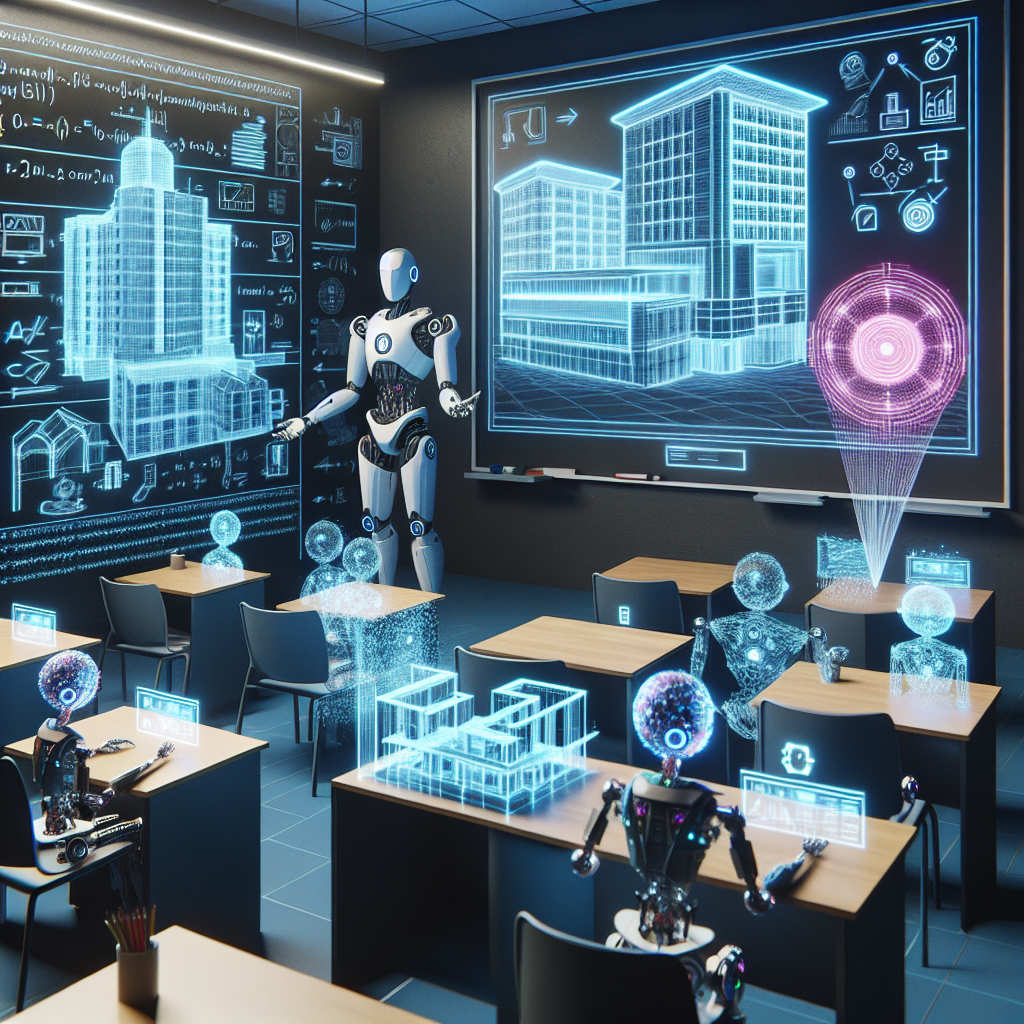Artificial Intelligence (AI) has been disrupting various industries, including architecture. With the advancement of technology, AI has the potential to revolutionize the way architectural education is delivered and the future of the profession. In this article, we will explore the impact of AI on architectural education and how it is shaping the future of the field.
The Role of AI in Architectural Education
AI has the ability to enhance the learning experience for students in architectural education. It can provide personalized learning experiences, analyze student performance, and offer feedback in real-time. AI-powered tools and platforms can assist students in understanding complex architectural concepts, generating design ideas, and simulating real-world scenarios.
One of the key benefits of AI in architectural education is its ability to automate repetitive tasks and streamline the design process. AI algorithms can analyze large datasets, generate design options, and optimize building performance. This not only saves time for students but also enables them to focus on more creative and critical thinking aspects of architecture.
AI can also facilitate collaborative learning among students and professionals in the field. Virtual reality (VR) and augmented reality (AR) technologies powered by AI can create immersive learning environments where students can collaborate on design projects, receive feedback from instructors, and interact with industry experts from around the world.
Furthermore, AI can help bridge the gap between academia and practice in architecture. By integrating AI-powered tools into the curriculum, students can gain practical skills that are relevant to the industry. This can better prepare them for the challenges and opportunities in the field of architecture.
The Future of Architectural Education with AI
As AI continues to evolve, the future of architectural education is likely to be shaped by this technology in the following ways:
1. Personalized Learning: AI-powered platforms can adapt to the learning needs and preferences of individual students. By analyzing student data and performance, AI can provide personalized recommendations, exercises, and resources to help students achieve their learning goals.
2. Design Assistance: AI algorithms can assist students in generating design ideas, analyzing building performance, and optimizing design solutions. This can enhance the design process and enable students to explore innovative ideas in architecture.
3. Collaboration and Communication: AI-powered tools can facilitate collaboration among students, instructors, and industry professionals. Virtual reality (VR) and augmented reality (AR) technologies can create immersive learning environments where students can work together on design projects, receive feedback, and interact with experts in the field.
4. Industry-Relevant Skills: By integrating AI-powered tools into the curriculum, students can gain practical skills that are relevant to the industry. This can better prepare them for the challenges and opportunities in the field of architecture.
5. Continuous Learning: AI can enable continuous learning for students and professionals in architecture. By providing access to online courses, tutorials, and resources, AI-powered platforms can help individuals stay updated with the latest trends and technologies in the field.
FAQs
Q: How can AI enhance the learning experience for students in architectural education?
A: AI can provide personalized learning experiences, analyze student performance, and offer real-time feedback. It can also automate repetitive tasks, streamline the design process, and facilitate collaborative learning among students.
Q: What are some AI-powered tools and platforms that can assist students in architectural education?
A: Some AI-powered tools and platforms include design software with AI algorithms, virtual reality (VR) and augmented reality (AR) technologies, and online learning platforms with AI-driven content recommendations.
Q: How can AI bridge the gap between academia and practice in architecture?
A: By integrating AI-powered tools into the curriculum, students can gain practical skills that are relevant to the industry. This can better prepare them for the challenges and opportunities in the field of architecture.
Q: What are some future trends in architectural education with AI?
A: Some future trends include personalized learning, design assistance, collaboration and communication, industry-relevant skills, and continuous learning enabled by AI-powered tools and platforms.
In conclusion, AI has the potential to transform architectural education and shape the future of the profession. By leveraging AI-powered tools and platforms, students can benefit from personalized learning experiences, design assistance, collaboration opportunities, and industry-relevant skills. As AI continues to evolve, the future of architectural education is likely to be driven by this technology, offering new opportunities for innovation and growth in the field.

